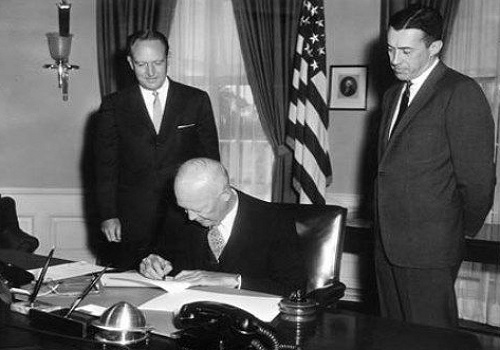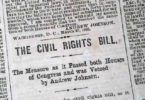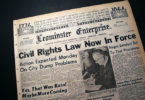
President Dwight Eisenhower signing the Civil Rights Act of 1960 in the Oval Office
The Civil Rights Act of 1960 was signed into law by President Dwight D. Eisenhower on May 6, 1960. This act did not introduce a new law but was aimed at strengthening and covering loopholes in the Civil Rights Act of 1957. It established:
- Federal inspection of local voter registration polls by appointed referees to oversee southern elections and ensure that African Americans were permitted to vote.
- Penalties for anyone who obstructed someone’s attempt to register to vote or vote.
- It extended the life of the Civil Rights Commission which was previously limited to two years. The Commission would oversee voter registration and practices.
- Prosecution for interfering with court orders regarding school desegregation.
This piece of legislation mandated that local voter registration records be available for the Justice Department allowing rejected applications to be reviewed by appointed referees. However this Act was limited in its scope and effect because it failed to enforce the law. The Justice Department had to bring forth specific cases to prove qualified citizens had been denied the vote because of race or color. As the number of cases prepared and filed piled up southern district court judges were hesitant to process them. Although this Act failed to enforce the law it showed the federal government’s commitment to work with civil rights organizations to end discrimination and segregation.
Demonstrations such as Selma pressured the administration of Lyndon B. Johnson into working on voting rights legislation. On August 6, 1965 the president signed the Voting Rights Act into law addressing the protection of voting rights. TheCivil Rights Act of 1964 addressed desegregation in schools, discrimination in the workplace and public facilities.






